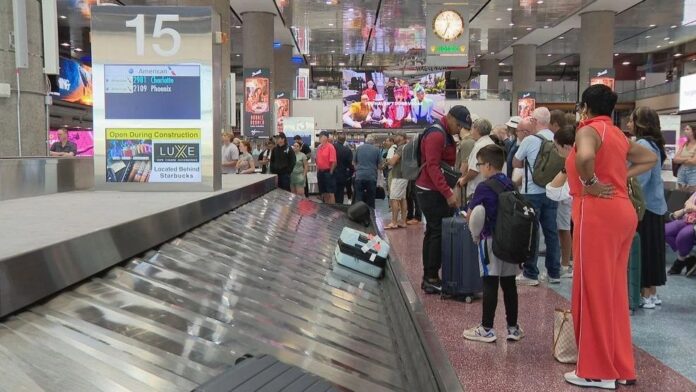LAS VEGAS (KSNV) — The ongoing government shutdown is creating waves of uncertainty for Las Vegas tourism, a sector deeply woven into the city’s economic fabric. According to the Las Vegas Convention and Visitors Authority, November saw the arrival of 3.3 million visitors, with 2.1 million flying in. However, any hiccup in air travel could spell trouble for tourism and those who rely on it for their livelihoods.
The pulse of the Strip feels noticeably different these days. Shaleah Taylor, a housekeeper working in one of the iconic hotels, shared a candid reflection: “It’s really slow right now.” This slow season is particularly unusual, given that the summer months typically brim with tourists. “July, August, September—those are never slow in Las Vegas,” she noted. The lack of occupancy has also deprived workers of the overtime pay they often rely on, further tightening their budgets.
Delving deeper into the potential repercussions of the shutdown, expert concerns are on the rise. Nic Irwin, an economics professor at UNLV, has sounded the alarm regarding the future impact on air travel into Reid International Airport. While operations may currently remain stable, he warns that a prolonged shutdown could lead to significant delays. “If air traffic gets impacted,” Irwin explained, “it could shift some people’s plans to visit here.” Longer wait times at TSA checkpoints or air traffic control disruptions could deter potential visitors, further affecting the local economy.
Aviation insights from Reed Yadon paint a somber picture. Though safety protocols will not waver, staffing shortages might necessitate a substantial reduction in flight availability—between 25% and 30%. “They’ll work with the personnel they have,” Yadon shared, “and if that means cancelling or delaying flights, then that’s what’ll happen.” Such developments may keep customers from making that journey to Las Vegas, an outcome that could ripple through the local economy.
The stakes are particularly high with massive events on the horizon. The Las Vegas Grand Prix is expected to attract over 300,000 enthusiastic fans next month, while New Year’s Eve usually draws around 400,000 visitors. Irwin emphasized the potential fallout, stating that fewer visitors translate to less spending, which could lead to layoffs and increased unemployment rates. “The local economy might be pushed toward a recession,” he warned, highlighting a cascading set of consequences that could unfold.
Yet, amid the challenges lies a proverbial silver lining. Irwin proposed that local businesses may pivot to attract residents during the holiday season with enticing deals for Thanksgiving, Christmas, and New Year’s festivities. “It’s good for us. We get these benefits as locals,” he reflected, underscoring the resilience and adaptability of the local economy in the face of difficulties.
